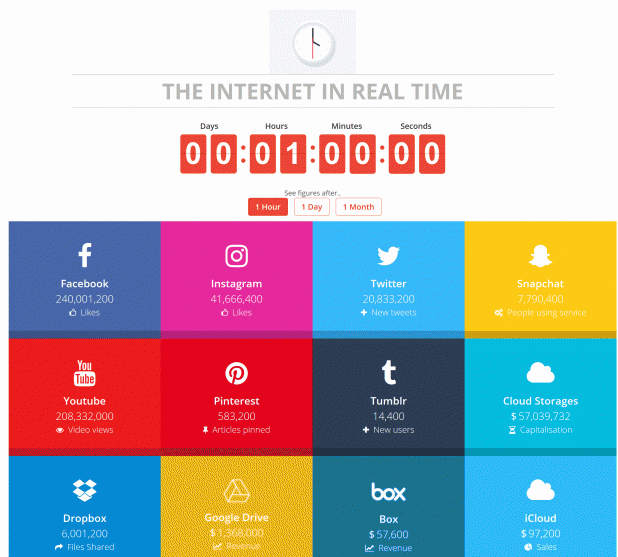The Rise of Social Media
Over the last decade or two, social media websites and applications have completely taken the world by storm. Their mix of entertainment, practicality, and accessibility has led to an explosion in their use and popularity. This popularity began primarily with younger generations, who were savvier with digital technology and the internet, both of which were still in their relatively adolescent stages at the time. But later, with the use of digital technology and the internet seeing a similarly meteoric rise, the use of social media sites expanded to include people of all ages and generations, from toddlers to grandparents.
This unprecedented growth in the worldwide use of social media is demonstrated brilliantly in this data from Statista, which gives a projection for 2019 social media users to reach approximately 2.77 billion people. That’s right… 2.77 billion! That’s 36% of the estimated current worldwide population of 7.7 billion (shown in this equally brilliant Current World Population clock ). According to research from Betipy, the 2.77 billion social media users in 2019 have risen from the recorded 0.97 billion users in 2010, giving a whopping increase of 1.8 billion over this 9-year period. The scale of this is simply unimaginable, and it’s set to continue, with 2021 figures expected to increase by a further quarter of a billion users to reach 3.02 billion.

The Evolution of Social Media
In addition to this sheer increase in the number of users, the social media environment also appears to be constantly evolving… whenever it feels as though the latest collection of new social media sites has achieved a peak in form and function, a completely new selection of social media sites typically arise from the ether. The new sites often offer transformations in social media use that were often previously overlooked. The transformations don’t take place in the same way that’s typical for developments in science and technology, where the ideas are already there but we don’t have the equipment or expertise to actually implement them; it’s typically the reverse for social media, where creative technology entrepreneurs invent revolutionary ways of employing existing technologies to create fun new social media platforms.
Take, for example, the rise of the social media giant Snapchat. When it was first released in September 2011, the technology it employed was anything but revolutionary. In fact, the ability to take and send pictures lasting only 10 seconds could have been considered a step backward from the existing social media platforms of the same era. Why would anyone want to send a picture that only lasted 10 seconds, when you could post something to Facebook and have it displayed permanently?
However, the creators of Snapchat had tapped into a unique and, at the time, embarrassingly fun new use of digital technology. Its use exploded and the user-base grew until it became a multi-billion dollar company. This was epitomized in 2017, as reported in this Guardian article when Snapchat’s owner company decided to go public, and subsequently saw the social media platform’s share price increase by 44% on the very first day of trading, leading to a total company value of $28 billion. And all for providing users with the ability to send short-lived pictures!
This isn’t a unique case, and this process of evolution has driven the social media landscape from a selection of early, cumbersome sites, all the way through to the wealth of brilliant platforms available today. We went from Piczo and Bebo to Facebook and Twitter in a matter of years. Many past social media successes have been destroyed by their upcoming new rivals, such as the overthrow of Myspace by Facebook. It’s interesting to read old articles that discuss this takeover as it was happening, such as this Forbes article from January 2011. The article explores how and why Facebook flourished while Myspace deteriorated, eventually leading to Myspace being forced to lay off half their workforce in the same week as the article.
As the old giants fell, the new behemoths rose. According to another informative bar chart from Statista, the top five most popular social network platforms worldwide, in terms of their number of active users, are:
- Facebook: 2,320 Million
- YouTube: 1,900 Million
- WhatsApp: 1,600 Million
- Facebook Messenger: 1,300 Million
- WeChat: 1,098 Million
Interestingly, some sites that may be widely considered larger, such as Twitter and Snapchat, fall further down the list, at #12 (330M) and #17 (287M), respectively.
With such an ever-changing social media landscape, and with so many great sites and apps available to users, it’s no surprise that social media use has become such an integral part of modern life. It’s also exciting to consider what future social media platforms may have in store!

The Future of Social Media
We’ve already seen the vast majority of social media platforms expanding their sites’ functionality to ensure they offer a wider range of characteristics and features for their users. Many sites that started as a “one-trick-pony” have since added functionality similar to that of their competitors, or in some cases outright copied them. This intermingling of functionality between platforms is expected to continue, but it’s difficult to predict where this could end up, given the vast number of potential features that new, upcoming social media platforms could create, and which of these features may be integrated by existing platforms.
Outside of the social media landscape, we’re also seeing a rapid move towards machine-to-machine communication and what’s been dubbed “The Internet of Things”. This phrase is used to describe the addition of internet capabilities to everyday physical devices, leading to an ever-increasing level of connectivity between objects of all shapes, sizes, and functions. There’s no doubt that the combination of the internet of things with social media platforms will likely lead to revolutionary uses for both technologies, 5, 10, and 20 years down the line. But again, there are so many possibilities that it becomes extremely hard to predict the global direction. However, it’s also this lack of predictability that makes the future of social media so exciting!
Angelina Murphy is a content editor and currently working with Protein Powder GB, a Health supplement supplier company. She loves working in the ever-changing world of Health management and is fascinated by the role content plays in today’s business era.
The post The Scale of the Largest Upcoming Social Media Companies appeared first on SiteProNews.



